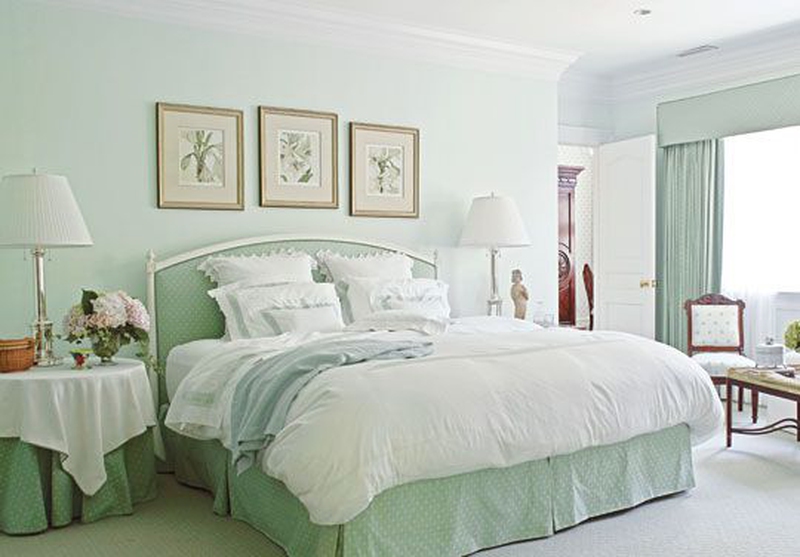When it comes to creating an allergy free bedroom, prevention is always better than the cure - even the cleanest of Australian homes can harbour the highest concentrations of allergens. But studies have shown avoidance measures can be just as effective as drug therapy for controlling allergy symptoms. Here are some top tips for creating (and keeping) an allergy free bedroom.

Part 1: The big ticket items
Flooring
Floorboards and tiles are the best choices in terms of staying low allergen, simply because they can be cleaned thoroughly and easily. Carpets can store dustmites, mould (if any liquid, including from steam cleaning, is not thoroughly dried), pet hair and pollen, so choose a low pile over high pile carpet if you do decide to use them. When it comes to maintaining low allergen floors, Dr Brynn Wainstein, a consultant specialist in Paediatric Allergy and Immunology says damp mopping is best as it captures dust and allergens instead of flinging them elsewhere into the room. “Cleaning floors once a week is realistic,” he says.
Bedding
According to recent research conducted by BELL Laboratories, the bedroom doona is the major culprit when it comes to house dust*. Feather bedding is found to have lower levels of allergens than synthetic and to really reduce allergens, use mattress and pillow protectors that can be washed regularly (using water at least 55 degrees Celsius). Bedding is a favoured spot in the house for dust mites, so sheets and covers should be cleaned every week in the hottest water possible, and protectors and doonas should be washed every two months. Soft toys can be thrown in the wash with covers once a week as they tend to carry a lot of allergens also.
Heating and cooling
Air conditioners are great for heating and cooling and allow you to keep windows closed during high pollen counts, but the filters will need to be cleaned or replaced regularly. Air conditioning units also provide a nice surface for dust to collect on, so give them a thorough wipe over with a damp or electrostatic cloth when you dust the room. Evaporative air conditioning promotes humidity (which may promote mould) but refrigerated reverse-cycle systems take the moisture out of the air and allow for adjustment of temperature.
Other items
Dr Wainstein says all horizontal surfaces, including furniture and picture rails, will gather dust, so ensure they get a regular wipe down with a damp or electrostatic cloth. Leather and vinyl coverings are easier to clean than fabric and cane and rattan seats are also less likely to promote mite growth. While cushions and rugs can add colour and warmth, check the care instructions to ensure they can be washed easily in hot water.
Window Coverings
External blinds and shutters are preferred to drapes, or vertical and rollers blinds are also suitable. If you have someone with more severe allergies, machine washable curtains may be a better choice.
Part 2: Healthful habits
Banish clutter
Obviously a toy free zone is a happiness free zone for kids, but piles of toys, stacks of books and anything that can collect dust needs to be kept to a minimum. If you have lots of 'stuff', consider investing in lidded containers to keep the dust out and clean the lids regularly as they collect a lot of dust themselves.
Limit snacks to the kitchen
Cockroaches love crumbs, and cockroach droppings can cause allergy symptoms (not to mention little people screaming out from their bedrooms at night!). Cockroaches need water and food to survive, so keeping the crumbs and cups from bedrooms will keep them at bay.
Keep pets at bay
Dr Wainstein says dogs and cats bring a lot of outdoor allergens into the home on their coat, which is then shed on the floor and beds. It’s also a good idea to wash pets as often as they can tolerate (some will better tolerate frequent washing, while others will have a skin reaction – talk to your vet about alternate cleaning products for sensitive pets).

View All Comments /Add Comment